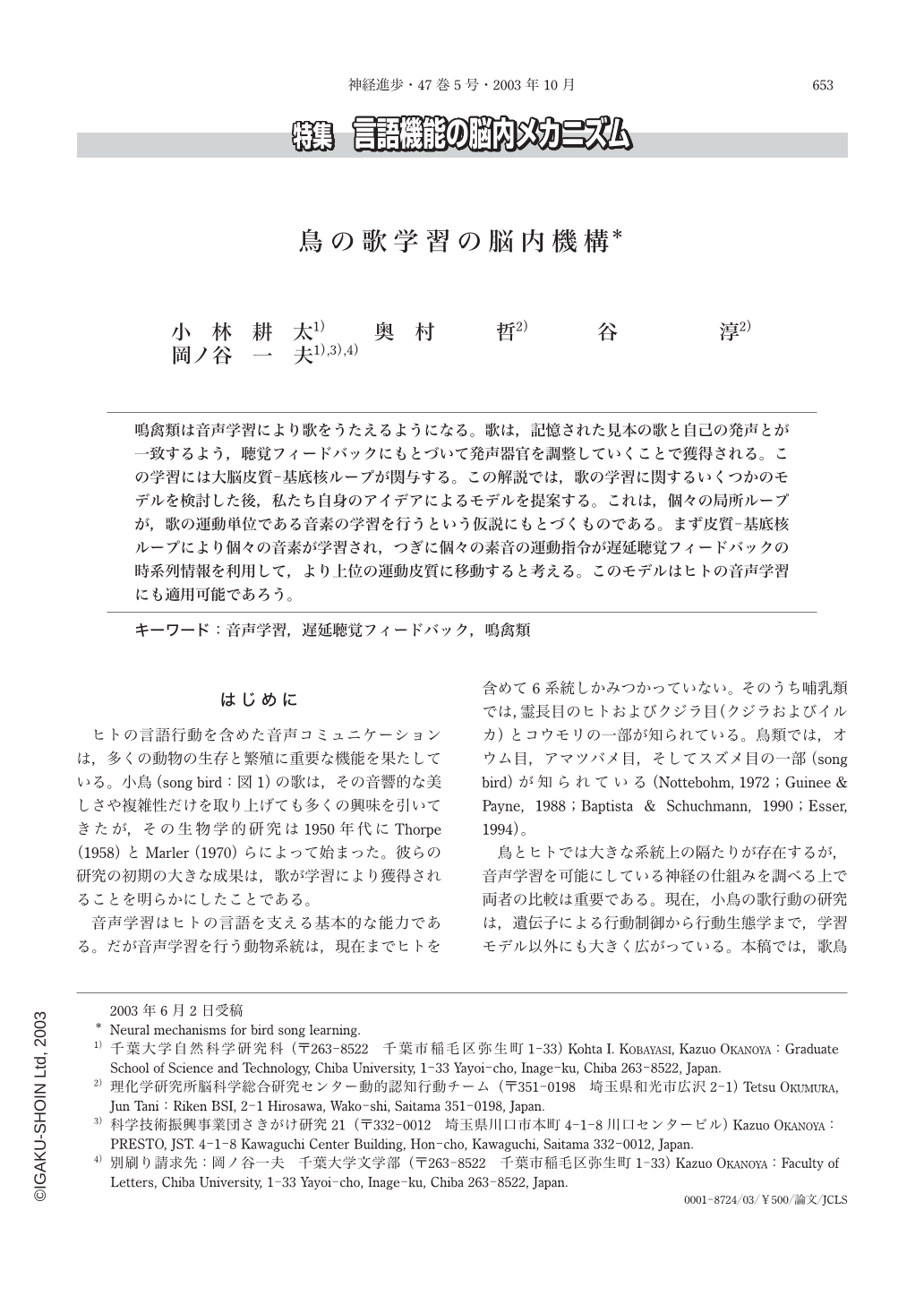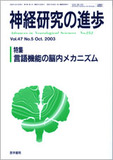Japanese
English
- 有料閲覧
- Abstract 文献概要
- 1ページ目 Look Inside
鳴禽類は音声学習により歌をうたえるようになる。歌は,記憶された見本の歌と自己の発声とが一致するよう,聴覚フィードバックにもとづいて発声器官を調整していくことで獲得される。この学習には大脳皮質-基底核ループが関与する。この解説では,歌の学習に関するいくつかのモデルを検討した後,私たち自身のアイデアによるモデルを提案する。これは,個々の局所ループが,歌の運動単位である音素の学習を行うという仮説にもとづくものである。まず皮質-基底核ループにより個々の音素が学習され,つぎに個々の素音の運動指令が遅延聴覚フィードバックの時系列情報を利用して,より上位の運動皮質に移動すると考える。このモデルはヒトの音声学習にも適用可能であろう。
はじめに
ヒトの言語行動を含めた音声コミュニケーションは,多くの動物の生存と繁殖に重要な機能を果たしている。小鳥(song bird:図1)の歌は,その音響的な美しさや複雑性だけを取り上げても多くの興味を引いてきたが,その生物学的研究は1950年代にThorpe(1958)とMarler(1970)らによって始まった。彼らの研究の初期の大きな成果は,歌が学習により獲得されることを明らかにしたことである。
音声学習はヒトの言語を支える基本的な能力である。だが音声学習を行う動物系統は,現在までヒトを含めて6系統しかみつかっていない。そのうち哺乳類では,霊長目のヒトおよびクジラ目(クジラおよびイルカ)とコウモリの一部が知られている。鳥類では,オウム目,アマツバメ目,そしてスズメ目の一部(song bird)が知られている(Nottebohm, 1972;Guinee&Payne, 1988;Baptista&Schuchmann, 1990;Esser, 1994)。
鳥とヒトでは大きな系統上の隔たりが存在するが,音声学習を可能にしている神経の仕組みを調べる上で両者の比較は重要である。現在,小鳥の歌行動の研究は,遺伝子による行動制御から行動生態学まで,学習モデル以外にも大きく広がっている。本稿では,歌鳥の研究を支えてきた主要な興味の1つである音声学習を支配する神経系の構造と機能について述べていきたい。
Male songbirds learn their mating vocal display, the song, through auditory feedback. This leaning is mainly processed by the basal ganglia-thalamo-cortical loop. Recently, it is shown that the loop is consisted of several closed sub-loops and that each of loops projects topographically. In this review, we introduce several models for song learning that are anatomically and neurophysiologically inspired. We then propose a new model for avian song learning. In the first phase of the sensorimotor learning every loop learns song note, motor unit of production, and the process would be mediated thorough reinforcement learning. In the second phase motor commands obtained in the premotor area are re-learned in a higher motor cortex by taking advantage of the time stamps of auditory feedback. Through this process, the motor responsible site shifts to a higher order area and older area begin to handle an efference copy of the motor commands. By this model we can consolidate conflicting views of past studies.

Copyright © 2003, Igaku-Shoin Ltd. All rights reserved.


